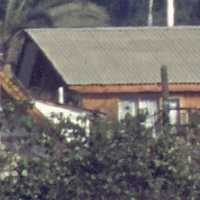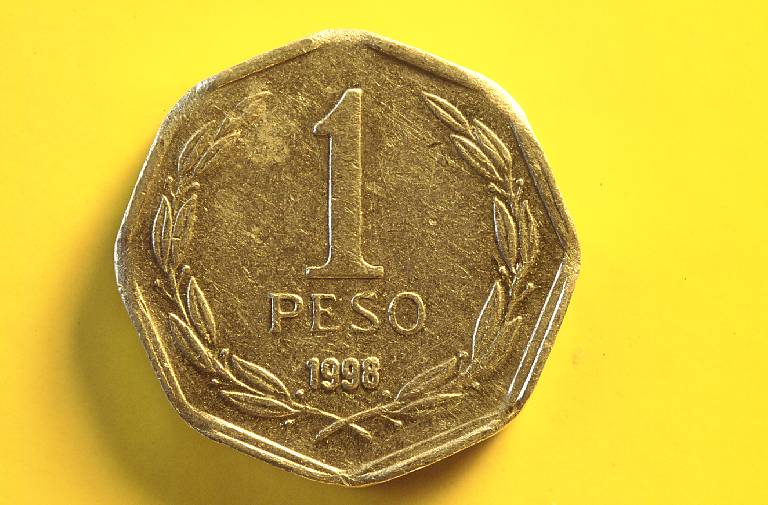Marumi fisheye converter on 28mm, at f/16 |

|
Marumi Fisheye converter on 50mm, at f/16
Now it fills the frame, while the circular distortion is still strong. Sharpness is good in the center but still bad at the edges. The Marumi converter can be used for an ocassional effect photo, but not much more. |

|
Tokina 17mm f/3.5, at f/8
This lens gives very nearly the same field of view as the fisheye-50mm combination, but without circular distortion. Sharpness at the edges is very much better too. |

|
Cosina 28mm f/2.8, at f/8
This lens is my favorite for landscapes. Despite its low mechanical quality (screws that break out, rings that unscrew, paint that peels off), it is optically very good. |

|
Pentax SMC-M 50mm f/2, at f/11
An archtypical standard lens, very small and lightweight, it is a decent performer. It is a little degraded from internal contamination and could use a good cleanup. |

|
Vivitar 75-205mm f/3.8 zoom, at 85mm f/11
While this is a relatively good zoom, better in any case than the typical cheap zooms that come as default on most modern consumer cameras, its sharpness isn't brilliant, specially at the edges. But it has provided me long and good service while I didn't have anything better. At 85mm it's actually quite decent, but at the long focal lengths it's clearly inferior to a prime lens. |

|
Pentax SMC-A 135mm f/2.8, at f/11
I got this lens used and very cheaply, because it had a stuck diaphragm. After cleaning it from oil contamination, it works perfectly. The quality is quite good in the areas of sharpness and contrast, but it has a generous amount of pincushion distortion. |

|
Pentax SMC-A 200mm f/2.8 ED, at f/11
This lens delivers beautiful images, crisp and contrasty. The lighthouse is surrounded by haze, so I added a third detail scan to let you see the contrast and sharpness. |


 |
Pentax SMC-A 400mm f/5.6, at f/16
While this is no ED, it still produces quite usable images. Definitely quite a bit better than the zoom with teleconverter, which is what I used before! Like for the 200, I have added a third detail scan. Keep in mind that even the house in the third small image is about one km away! |


 |
MC MTO-11CA 1000mm f/10 Maksutov catadioptric
This mirror lens was obtained very inexpensively, but unfortunately it is very unsharp. So much so, that it cannot be used for serious slide work. Since it has no diaphragm, it cannot be stopped down to improve quality. An experiment with a homemade diaphragm did not show any significant improvement. |

|
The bellows attachment50mm reversed, f/16, slightly extended
This flashlight bulb lit itself for the test photo. This is actually not a macro shot, but a micro one! The image size on the film is larger than the original. Depth of field is a real problem with such work, thus the very small aperture used. With the extension, the f/16 set on the lens is an even smaller true aperture. SInce the field produced by a lens in this configuration is much larger than the frame, sharpness doesn't change significantly over the frame. Thus I included only one detail scan. |
 |
50mm reversed, at minimal extension, f/11
This is the smallest coin currently circulating in Chile. It measures 16mm in diameter. The light spot at the center, with X-shaped arms, has me puzzled. It seems to be light from outside the field, reflecting inside the bellows, camera, and then somehow converging into a spot, probably on the lens. But the X??? It's slight in this photo, but worse in some others! |
 |
50mm reversed, at maximal extension, f/4.5
Nice, huh? Did you know that a coin can have so much surface texture? The image on the film is about three times as large as the original. But the resolution is becoming poor. After all, the lens is projecting an image that covers 10 times the frame area! |
 |
28mm reversed, at maximal extension, f/5.6
This is pretty extreme. Magnification on the film is more than 6:1. The "8" obviously must have had an accident. The detail is from the lower left of the "8". Actually, this is asking too much from such a lens! The image projected is about 50 times the frame area. Even a good lens is begging for mercy at this stage! |
 |
135mm in normal position, at maximal extension, f/16
Note the light spot, precisely in the center of the frame despite the coin is decentered. Note also the X arms.Can you help me find where they come from? |
 |









